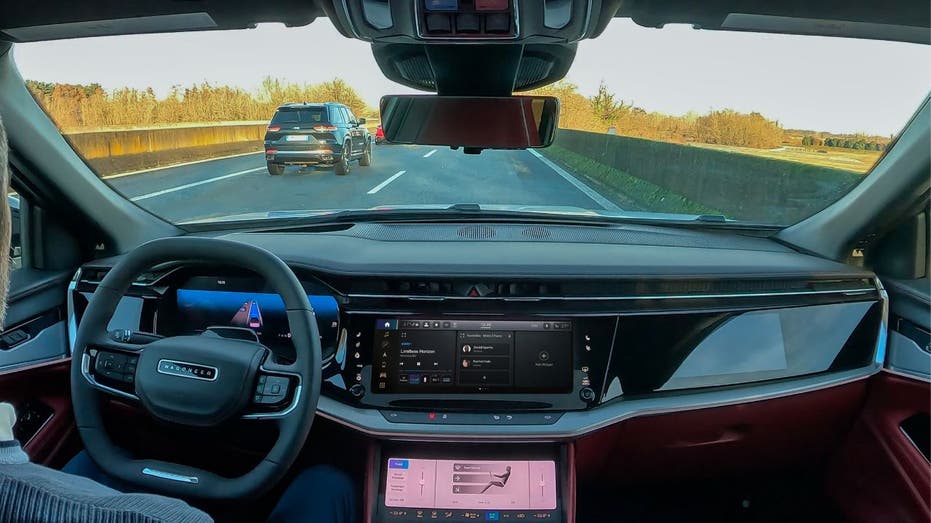Ready to Embrace the Future of Driving Without Lifting a Finger?

Are you prepared to transform your daily commute into a time for entertainment, productivity, or simply savoring the scenery without having to keep your eyes on the road? This futuristic concept is rapidly becoming a reality, thanks to the latest advancements in autonomous driving technology. Stellantis, the parent company of renowned automotive brands such as Dodge, Jeep, and Chrysler, has recently introduced its groundbreaking STLA AutoDrive 1.0 system, which aims to revolutionize the driving experience.
The Innovative STLA AutoDrive 1.0 System
Stellantis has developed an advanced Level 3 automated driving system that allows drivers to safely disengage from traditional driving tasks. The STLA AutoDrive 1.0 system is designed to manage steering, acceleration, braking, and maintaining safe distances from other vehicles—all without human intervention. This means that drivers can potentially engage in activities like watching movies, reading, or responding to emails while the car navigates through traffic and on highways at speeds of up to 37 mph, under certain conditions.
While this technology is fully developed and ready for deployment, Stellantis is holding back its launch due to a currently limited market for Level 3 autonomous driving. The company plans to introduce this innovative technology once consumer demand and regulatory frameworks become more accommodating.
Impressive Features of STLA AutoDrive
The STLA AutoDrive system boasts several remarkable features that set it apart in the realm of autonomous vehicles:
– **Hands-Free Driving**: At speeds of up to 37 mph, drivers can completely disengage from driving tasks, allowing them to focus on other activities.
– **Weather Resilience**: The system is engineered to operate effectively at night and in light rain, ensuring reliable performance in various weather conditions.
– **Automated Sensor-Cleaning**: An integrated cleaning system keeps critical sensors clear, enhancing reliability and functionality.
– **Cloud Connectivity**: STLA AutoDrive can receive over-the-air updates, making it scalable and adaptable to future advancements.
– **Future Enhancements**: Stellantis hints at potential upgrades that could enable operation at speeds of up to 59 mph and even off-road automation.
Understanding Level 3 Autonomy
Level 3 autonomy, also known as “conditional automation,” presents unique challenges. The system can only be activated under specific driving conditions, requiring precise environmental and traffic criteria to be met. Additionally, drivers must stay alert and ready to reclaim control at a moment’s notice, a standard that can be challenging to maintain. Regulatory bodies also face obstacles in establishing and enforcing safety standards for this level of autonomy, as they must balance safety with technological innovation.
The Competitive Landscape of Autonomous Driving
Stellantis is not alone in its pursuit of Level 3 autonomy. In 2023, Mercedes-Benz became the first to launch an SAE Level 3 system in commercial vehicles in both Europe and the U.S. Other major automakers, including Honda, Ford, GM, Volvo, Sony, Kia, and Xpeng, are also developing their own Level 3 systems, reflecting a competitive and rapidly evolving automotive landscape.
The Future of Driving: What to Expect
Once the STLA AutoDrive hits the market, it has the potential to drastically change the driving experience. Automated driving in heavy traffic could alleviate stress during commutes, allowing individuals to relax or engage in more productive activities. Travel time could be used more efficiently, whether catching up on work or enjoying personal entertainment. Enhanced safety is another promising benefit, as advanced sensors and AI technology may reduce human error and improve overall road safety.
The Journey Towards Full Autonomy
Stellantis’ STLA AutoDrive represents a significant step forward in the development of fully autonomous vehicles. While the technology is ready, the market and regulatory environment are still evolving. As automakers continue to explore the possibilities of advanced driving technologies, we are moving closer to a future where vehicles can truly drive themselves. However, the shift will likely be gradual, with safety and consumer acceptance playing vital roles in the widespread adoption of Level 3 autonomy and beyond.
Are You Ready for Hands-Free Driving?
Are you excited about the possibility of relinquishing control of the wheel to let technology take over? Share your thoughts with us at Cyberguy.com/Contact.
For more tech tips and security alerts, subscribe to the CyberGuy Report Newsletter at Cyberguy.com/Newsletter.
Stay connected with us for the latest updates and insights into the evolving world of technology!